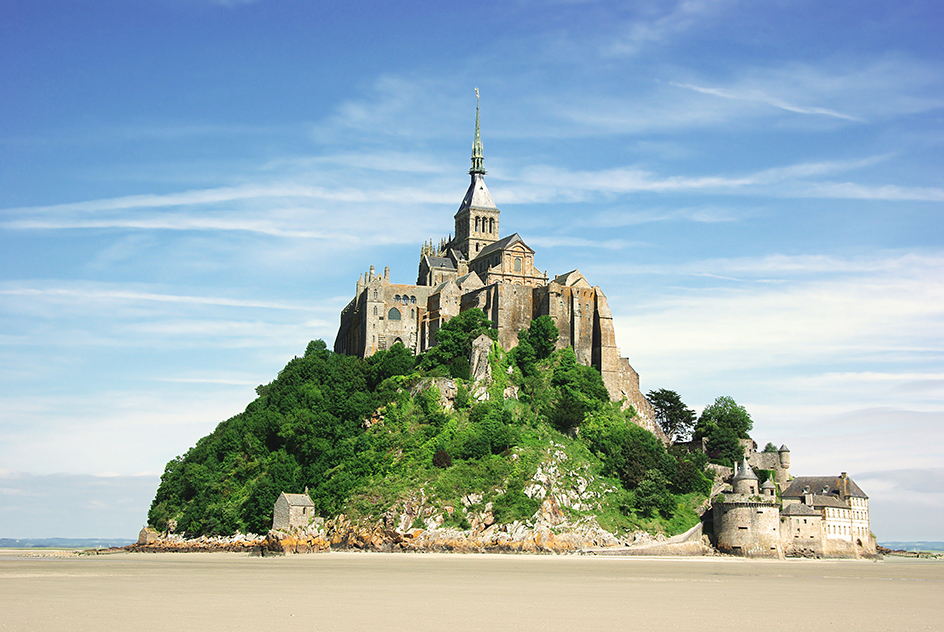Normandy is a region in northwestern France. It was named after the Norse people who conquered the area in the 800’s. The region’s name is spelled Normandie in French.
Normandy lies along the English Channel coast between the regions of Brittany and Hauts-de-France. Famous towns in Normandy include Rouen, the region’s capital; Le Havre, a leading port; Honfleur; Caen; Bayeux; and Cherbourg. The inhabitants are well known as sailors and farmers. The farmers specialize in dairying and raising fruits, especially apples for cider and brandy. Iron ore is mined near Caen. Tourism is an important industry along the coast.

In A.D. 911, the Carolingian king Charles the Simple granted much of what is now Normandy to the Norman chieftain Rollo, also called Hrolf. One of Rollo’s most famous descendants was William the Conqueror, who won the English crown after the Battle of Hastings in 1066. Events of the battle are pictured on the famous Bayeux Tapestry, a medieval wallhanging housed in France in the Bayeux Tapestry Museum in Bayeux. Normandy was united with England during the reign of the English king Henry I (1100-1135). England and France struggled for control of Normandy during the Hundred Years’ War. The English recovered the region twice, but finally lost it in 1449 to Charles VII, king of France. Joan of Arc became famous as the leader of French troops in the fight for Normandy.
Normandy attracted worldwide attention on June 6, 1944, when Allied troops landed on its beaches. From Normandy, the Allies drove the Germans out of France. Many of the towns in Normandy were damaged in the fighting.
See also Bayeux Tapestry; Normans; World War II (D-Day).
